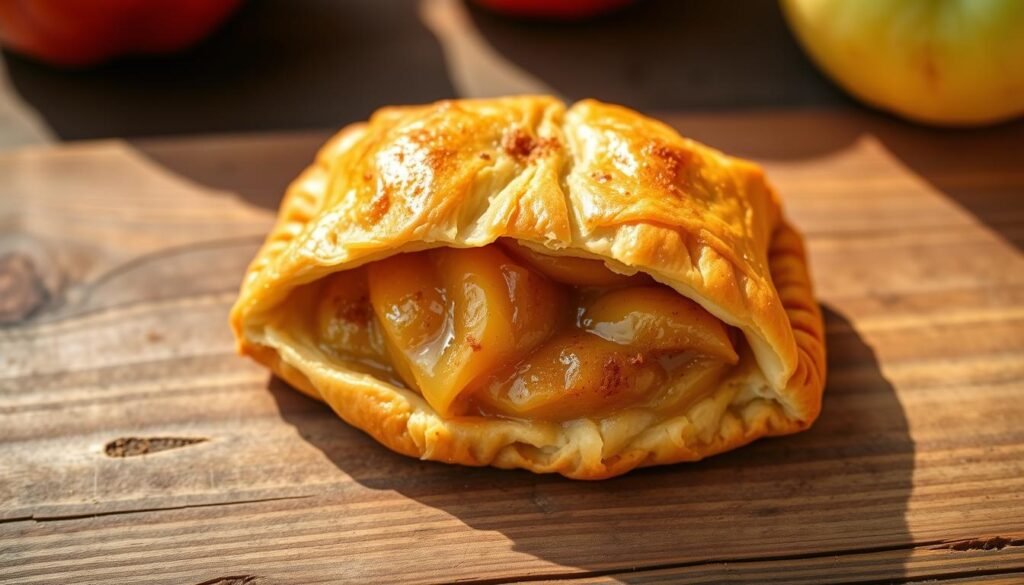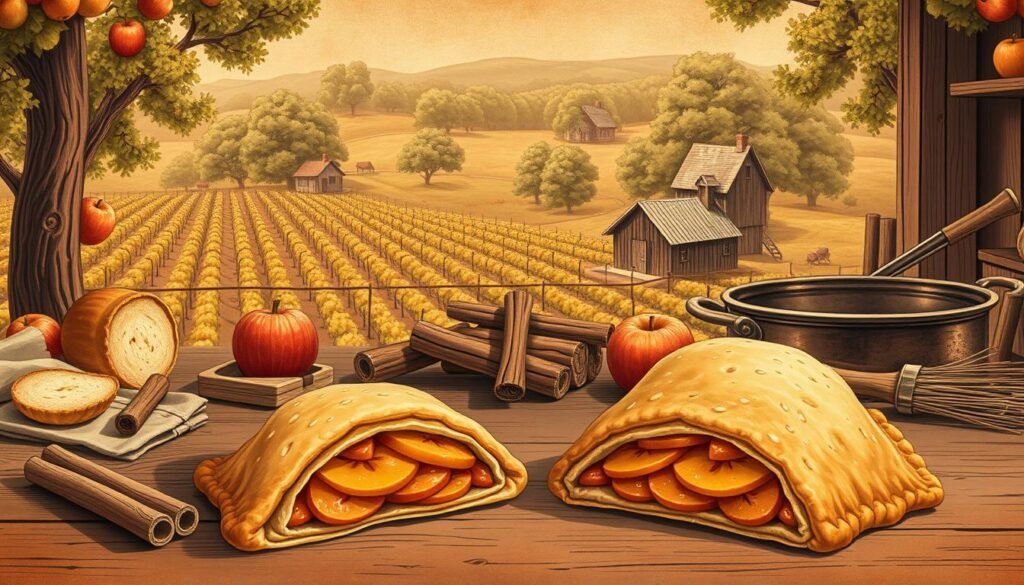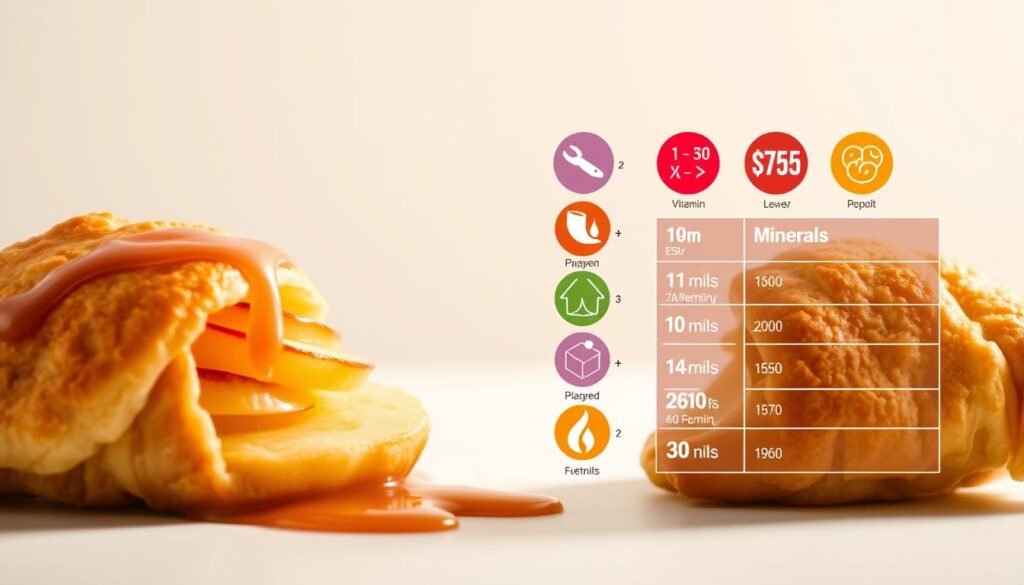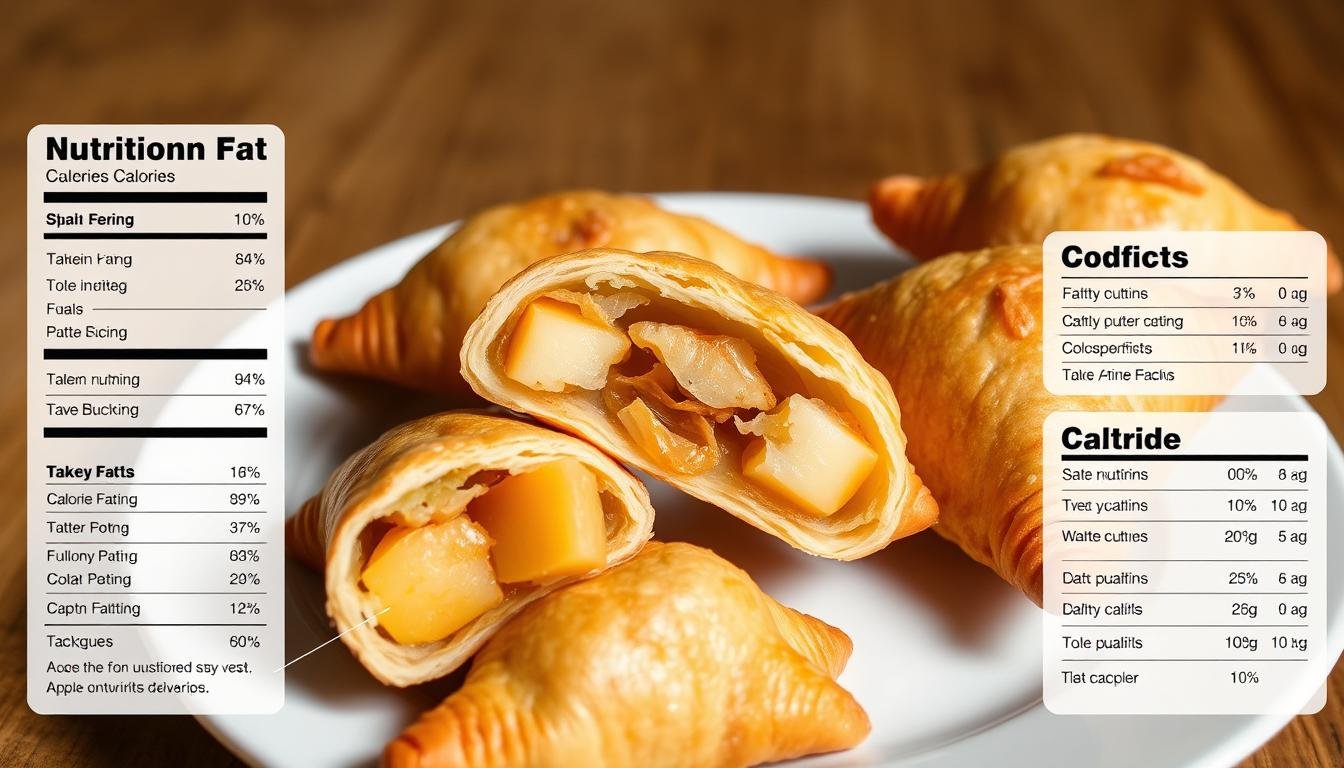Can a flaky, cinnamon-spiced dessert actually fit into a balanced diet? This question sparks curiosity for anyone who loves the sweet crunch of a freshly baked pastry. Let’s dig into the facts behind this beloved treat—and whether it deserves a spot on your plate.
Originating in medieval Europe, these handheld pastries became popular for their portability and simple ingredients. Over time, they evolved into American classics, with recipes now ranging from sugar-free versions to those made with puff pastry or crescent rolls. Modern twists even swap traditional crusts for lighter alternatives like phyllo dough.
A typical store-bought option, like the Pepperidge Farm variety, packs 260 calories per serving with 13g of fat and 11g of sugar. Ingredients such as high fructose corn syrup and saturated fats raise questions about their nutritional value. However, homemade recipes allow control over additives, making them a customizable option.
This 1500-word guide explores the history, nutritional details, and creative ways to make apple turnovers that balance flavor and health. Whether you’re craving nostalgia or seeking diet-friendly options, we’ll help you decide if this treat aligns with your goals.
Key Takeaways
- Apple turnovers have roots in medieval Europe and became American staples through recipe adaptations.
- Modern variations include sugar-free recipes and alternative crusts like phyllo or crescent rolls.
- A single store-bought turnover contains 260 calories, 13g of fat, and 11g of sugar.
- Key ingredients like butter and added sugars impact their overall nutritional profile.
- Homemade versions offer flexibility to reduce calories and use healthier substitutes.
- The article covers historical context, nutrition analysis, and step-by-step recipe ideas.
Introduction to Apple Turnovers
What makes a handheld pastry a timeless favorite across centuries? At its core, this treat combines simplicity with indulgence—a golden, flaky exterior hugging a warmly spiced center. Let’s explore what defines its charm and why bakers still celebrate its versatility today.

Overview of the Classic Apple Turnover
The traditional version features a puff pastry crust, layered to create that signature crunch. Inside, tender chunks of fruit mingle with cinnamon, nutmeg, or hints of citrus zest. Some recipes toss in raisins or walnuts for extra texture. This balance of sweet and savory has kept it a staple in bakeries and home kitchens alike.
Key Ingredients and Their Appeal
Quality components make all the difference. Tart varieties like Granny Smith hold their shape during baking, while buttery dough adds richness. Modern twists swap refined sugar for honey or maple syrup. Gluten-free flour blends and vegan butter now let everyone enjoy this comfort food.
| Ingredient | Classic Version | Modern Twist |
|---|---|---|
| Pastry | Puff pastry | Phyllo or gluten-free dough |
| Sweetener | White sugar | Coconut sugar or date paste |
| Add-ins | Raisins, walnuts | Chia seeds, almond flour |
| Dietary Features | N/A | Vegan, protein-enriched |
Whether you stick to tradition or experiment with substitutes, the recipe adapts effortlessly. Next, we’ll trace how this portable delight traveled from European markets to American diners.
History and Origins of Apple Turnovers
Few handheld treats have traveled through time as skillfully as this flaky, fruit-filled favorite. Its story stretches from bustling medieval markets to cozy American kitchens, shaped by bakers who transformed simple ingredients into portable perfection.

European Beginnings and Medieval Roots
Early versions emerged in 17th-century Europe, where cooks wrapped spiced meats or fruits in dough. Puff pastry recipes first appeared in French cookbooks around this time, with precise instructions for layering butter into thin sheets. By the 1600s, sweet fillings like cinnamon-dusted fruit gained popularity.
Bakers timed their ovens carefully—early recipes often specified exact minutes for achieving golden crusts. Local orchards provided tart apples, which balanced the richness of pastry. These creations became staples at festivals, enjoyed by nobles and laborers alike.
The Evolution in America
Immigrants brought their pastry traditions to U.S. shores in the 1800s. New York street vendors sold warm turnovers by the 1880s, using affordable sugar and seasonal produce. Eastern European bakers introduced folding techniques that ensured fillings stayed sealed during baking.
Over time, home cooks adapted recipes to regional tastes. Some added caramel drizzle, while others swapped lard for butter. The treat’s portability made it a lunchbox favorite, securing its place in American food culture.
Nutritional Insights: Are Apple Turnovers Healthy?
Ever wondered how your favorite flaky treat stacks up nutritionally? Let’s dive into the numbers behind this beloved pastry and explore smart ways to enjoy it guilt-free.

Caloric Breakdown and Macronutrient Analysis
A standard homemade version baked in the oven clocks in at 185 kcal. Here’s the split:
- Carbs: 28g (mainly from crust and fruit)
- Protein: 3g (from dough and optional nut additions)
- Fats: 7g (varies with butter or oil choices)
Fried versions jump to 240 kcal due to oil absorption. Compare this to store-bought options averaging 260 kcal with higher saturated fats.
| Type | Calories | Sugars | Fiber |
|---|---|---|---|
| Homemade Baked | 185 | 9g | 2g |
| Store-Bought | 260 | 15g | 1g |
| Air-Fried | 205 | 8g | 3g |
Smart Swaps for Better Balance
Boost fiber by mixing whole wheat flour into your recipes. Swap white sugar with a tablespoon of honey per serving. For richer texture without guilt, try almond flour crusts.
Pair your pastry with protein-rich dips—think Greek yogurt sauce drizzled with cinnamon. These tweaks transform a classic dessert into a satisfying snack that keeps energy levels steady.
Step-by-Step Guide: How to Make Apple Turnovers
Ready to create your own flaky masterpiece? Follow these kitchen-tested steps to craft golden pastries bursting with warm spices. Let’s start with the heart of the dish—the filling.
Preparing the Apple Cinnamon Filling
Grate two medium tart apples (like Granny Smith) into thin shreds. Combine with 1 tsp cinnamon, ½ tsp vanilla, and 1 tbsp honey in a bowl. Let sit for 10 minutes—this draws out natural juices for a saucier mixture.
- Add 1 tsp cornstarch to thicken excess liquid
- Optional: Mix in chopped walnuts for crunch
- Taste before adding extra sweeteners
Perfecting the Dough and Assembly Process
Use 1½ cups flour, ½ tsp salt, and 6 tbsp softened fat (butter or coconut oil). Cut fat into flour until pea-sized crumbs form. Gradually add 4-5 tbsp ice water while kneading gently.
- Divide dough into 6 equal balls
- Roll each into 5-inch circles on floured surfaces
- Spoon 2 tbsp filling onto one half
- Fold dough over, press edges with fork tines
Pro Tip: Chill assembled pastries for 15 minutes before baking. This prevents leaks by firming up the fat in the crust. Bake at 375°F for 18-20 minutes until golden—your kitchen will smell like a pie shop!
Creative Variations and Recipe Tips for Apple Turnovers
Why settle for ordinary when your pastry can become a canvas for culinary creativity? With a few clever tweaks, this classic treat adapts to any dietary preference or seasonal craving. Let’s explore dough alternatives and ingredient swaps that keep things exciting.
Pastry Foundations: From Flaky to Foolproof
Puff pastry remains a top pick for its airy layers, but phyllo sheets offer a lighter crunch. For quick fall baking, pre-made crescent rolls save time—just roll, fill, and seal. Handling phyllo? Brush each layer with melted butter to prevent cracking.
- Puff: Thaw frozen sheets 40 minutes before cutting into squares
- Phyllo: Work quickly to avoid drying; cover unused sheets with a damp towel
- Crescent: Press perforations firmly to seal filling inside
Diet-Friendly Twists That Delight
Swap sugar with mashed dates or monk fruit sweetener for guilt-free indulgence. Vegan versions shine with coconut oil crusts and chia-egg binders. Boost protein by blending cottage cheese into the filling—it adds creaminess without overpowering spice notes.
- Mix ¼ cup almond flour into dough for extra nutrients
- Fold diced pears into fall-inspired batches
- Dust finished pastries with matcha or turmeric for color pops
Pin these instructions for your next baking session! Share your unique creations—whether gluten-free pockets or keto-friendly bites, every twist tells a tasty story.
Expert Tips and Troubleshooting Your Apple Turnover Recipe
Struggling with soggy crusts or runaway filling? These pro strategies transform kitchen disasters into golden-brown success. Let’s tackle common hurdles and boost your pastry game.
Handling the Dough and Preventing Filling Leaks
Chill dough for 20 minutes before rolling—cold fat creates flaky layers. Use a fork to crimp edges tightly, pressing twice around the perimeter. If juices bubble out mid-bake, sprinkle a teaspoon of oats under the filling to absorb excess moisture.
- Roll dough between two sheets of parchment paper to prevent sticking
- Leave ½-inch border when spooning filling
- Freeze assembled pastries 10 minutes before baking
“A baking sheet lined with parchment paper is your secret weapon—it prevents burning and ensures even heat distribution.”
Optimizing Baking Versus Frying Techniques
Oven baking at 375°F yields crispier results with 30% less fat. For air-fried versions, spritz baskets with oil and cook 12 minutes at 400°F. Fried options? Keep oil at 350°F and drain on paper towels immediately.
| Method | Time | Texture | Nutrition Per Serving |
|---|---|---|---|
| Baked | 18-20 mins | Flaky | 2g fiber, 15mg cholesterol |
| Fried | 6-8 mins | Crispy | 1g fiber, 35mg cholesterol |
Swap ¼ tsp baking powder for yeast in dough to reduce sodium. Need iron-rich crusts? Blend spinach puree into your flour mix—it adds nutrients without altering flavor. Now go make apple turnovers that wow both taste buds and nutrition labels!
Conclusion
Balancing tradition with modern tastes, this pastry proves indulgence can meet nutrition. From medieval European markets to today’s kitchens, its evolution reflects adaptability—whether through flaky puff pastry or lighter phyllo crusts. Homemade versions shine by swapping refined sugars for brown sugar or honey, while melted butter alternatives keep richness in check.
Nutritional value hinges on preparation. A baking sheet ensures even baking, locking in flavor without excess oil. Creative twists like chia-seed fillings or caramel sauce drizzles cater to diverse palates. Remember: chilling dough prevents leaks, and portion control maintains balance.
Ready to experiment? Whip up easy apple turnovers using crescent rolls or gluten-free dough. Share your creations online—tag photos of golden crusts or innovative fillings. When made mindfully, this treat offers both nostalgia and nourishment. Yes, enjoy that warm, cinnamon-kissed bite guilt-free!




